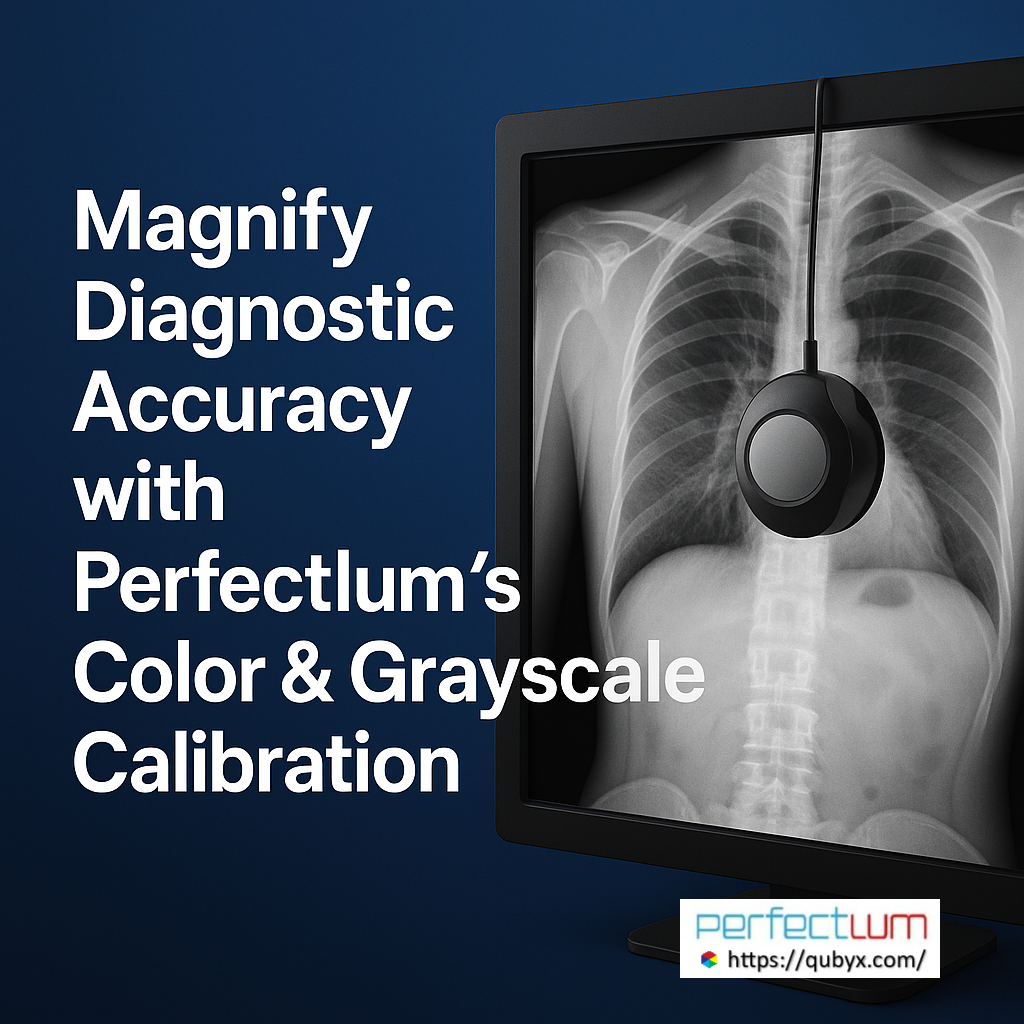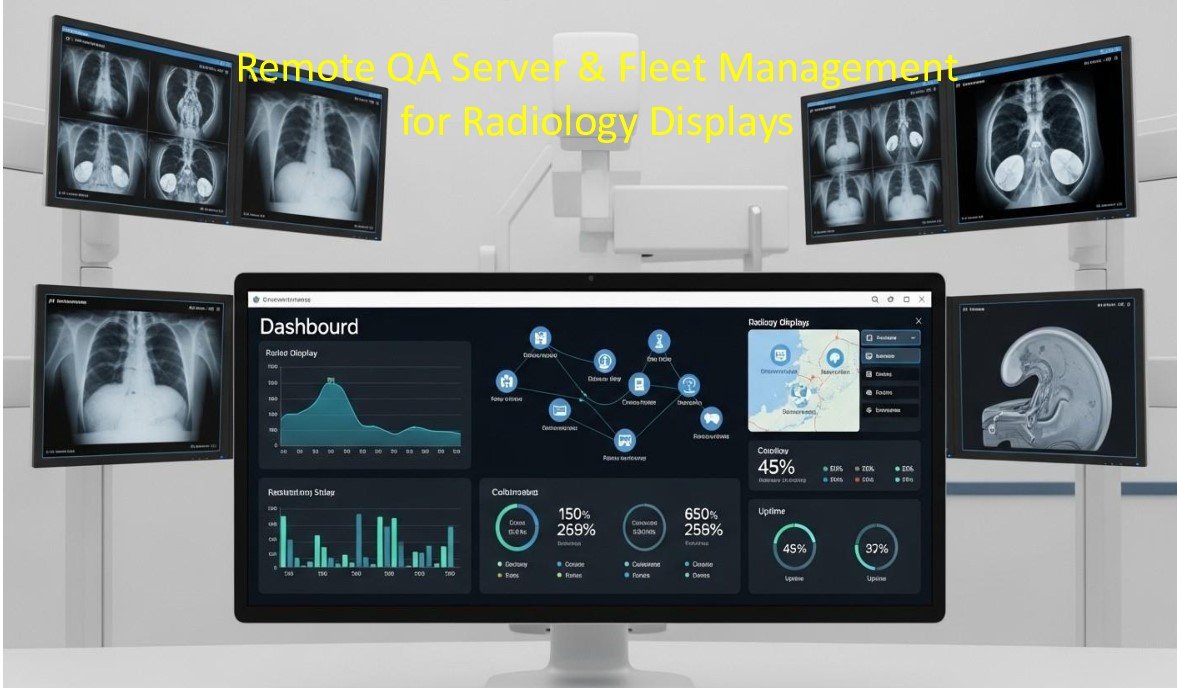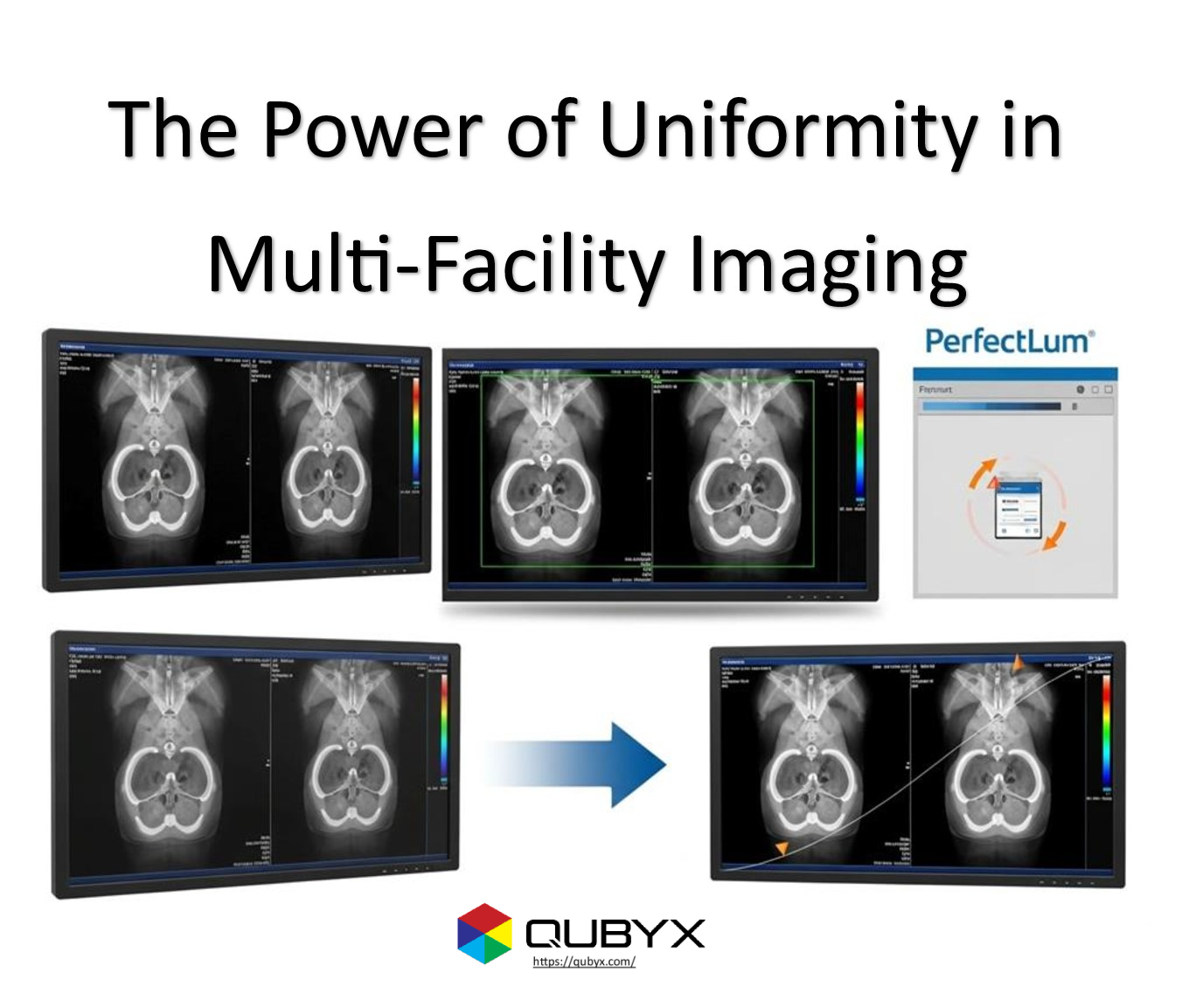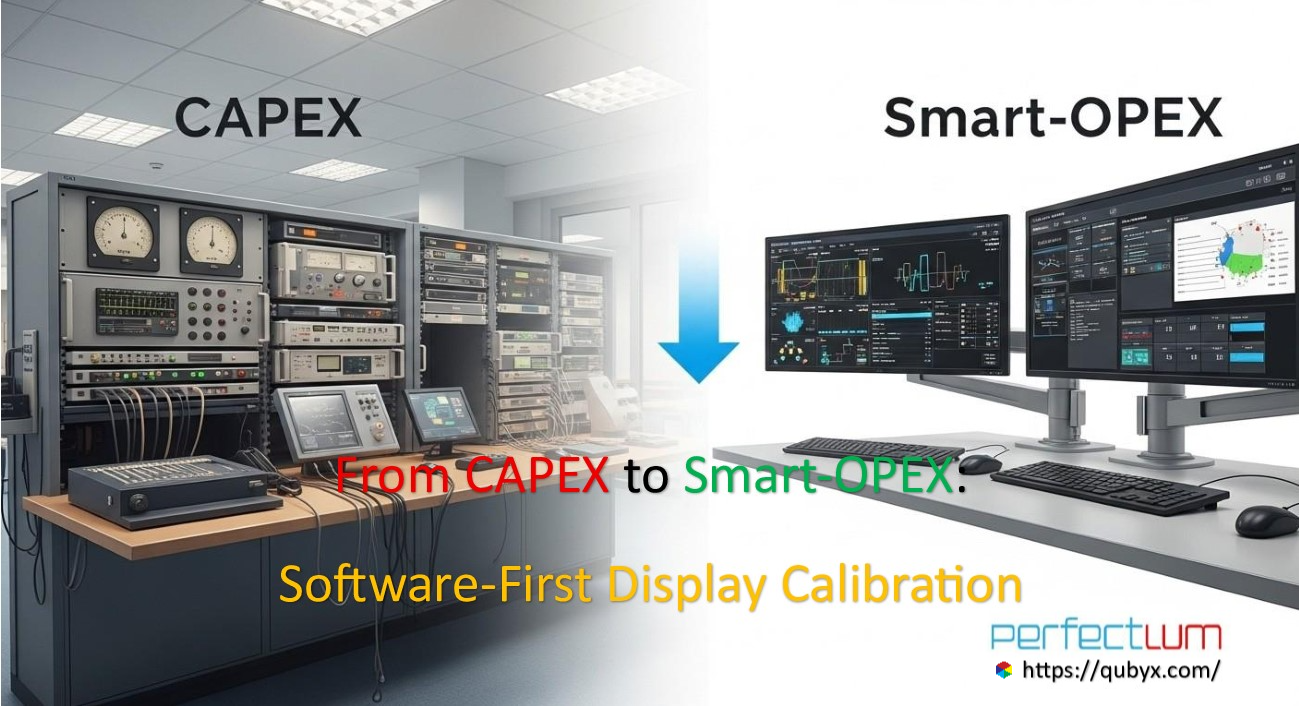News
- Home
- Perfectlum Color & Grayscale Calibration for Diagnostic Accuracy

Perfectlum Color & Grayscale Calibration for Diagnostic Accuracy
- September 27, 2025
- Shamsul
Perfectlum Color & Grayscale Calibration for Diagnostic Accuracy
Perfectlum’s Color and Grayscale Calibration for Diagnostic Displays plays a pivotal role in ensuring accurate and consistent imaging in healthcare. When dealing with critical diagnostic decisions, clinicians depend heavily on high-quality visual displays. Calibration tools like Perfectlum software are essential for maintaining both grayscale calibration and color accuracy, ensuring the images they review are precise and reliable. This process goes beyond basic setup, enabling healthcare providers to meet stringent standards and optimize diagnostic certainty.
The significance of Perfectlum’s Color and Grayscale Calibration for Diagnostic Displays lies in its ability to harmonize the displays’ output with standardized clinical requirements. This ensures every pixel accurately reflects the true tissue or material characteristics, minimizing interpretation errors. Calibration isn’t just an optional step—it’s a core component of delivering quality healthcare, and Perfectlum software offers an advanced solution for achieving this with consistency and efficiency.
Understanding Perfectlum’s Color and Grayscale Calibration
Perfectlum’s calibration technology is designed to fine-tune both grayscale calibration and color fidelity, aligning display output with industry standards like DICOM GSDF and sRGB. Knowing how the system works helps in appreciating its importance; it systematically adjusts display parameters to eliminate color casts and luminance discrepancies that can interfere with diagnostic interpretation.
By applying Perfectlum’s Color and Grayscale Calibration for Diagnostic Displays, clinicians achieve a uniform image appearance across devices and viewing conditions. This calibration process involves sophisticated measurement instruments and algorithms embedded within the Perfectlum software, which evaluate the display’s performance in real-time and make automatic adjustments, ensuring optimal imaging quality at all times.
The Importance of Grayscale Calibration in Diagnostic Displays
Grayscale calibration is critical because it ensures that subtle tonal differences in medical images are preserved and accurately displayed. These tonal variations can indicate pathology or tissue changes, making precise grayscale output vital for early detection and diagnosis. Without proper calibration, display contrast and luminance levels can distort these essential details, potentially leading to misdiagnoses.
Effective grayscale calibration with tools like Perfectlum enhances visual differentiation between tissues or abnormalities, which is essential in fields like radiology and pathology. It standardizes the display’s luminance response, ensuring that each shade of gray is correctly rendered relative to others, and maintains this calibration over time, countering display degradation and environmental factors.
Enhancing Diagnostic Imaging Quality with Perfectlum Software
Perfectlum software is expertly designed to optimize diagnostic imaging quality through precise calibration protocols. It combines user-friendly interfaces with advanced algorithms to streamline the calibration process, making it accessible even for users without extensive technical backgrounds. Its intelligent automation ensures a consistent and reliable calibration that significantly impacts diagnostic confidence.
Utilizing Perfectlum’s Color and Grayscale Calibration for Diagnostic Displays allows healthcare providers to consistently meet or exceed regulatory standards with minimal effort. The software not only calibrates displays initially but also offers ongoing monitoring and recalibration, preserving the integrity of images over their lifespan. This continuous quality assurance directly translates into more accurate diagnoses and improved patient outcomes.
Color Medical Displays: Achieving Accurate Color Representation
Color medical displays demand meticulous calibration because even small color inaccuracies can misrepresent tissue types, vascular structures, or other diagnostic markers. Perfectlum’s technology ensures that color medical displays reproduce colors faithfully according to industry standards, which is crucial in disciplines like dermatology, ophthalmology, and pathology.
Achieving precise color representation involves calibrating both the hardware and the software parameters to account for display-specific characteristics. Perfectlum software simplifies this process by providing real-time feedback and adjustments, making it easier for technicians to maintain the fidelity of color images and uphold the diagnostic integrity needed for sensitive visual assessments.
Step-by-Step Guide to Grayscale Calibration with Perfectlum
The calibration process begins with preparing the display and ensuring controlled environmental conditions. Next, the user initiates the Perfectlum software, which guides them through measurement procedures using a calibration device like a spectroradiometer or photometer. The software then analyzes the display’s luminance responses across different gray levels, creating a profile for adjustment.
Following this, Perfectlum applies the necessary corrections—adjusting luminance and gamma settings—until the display’s grayscale output aligns with the DICOM GSDF standards. Regular recalibration is recommended to counteract device aging, and the software provides easy-to-follow instructions for maintaining calibration consistency, ultimately enhancing diagnostic accuracy and workflow efficiency.
Maximizing Diagnostic Imaging Quality Through Calibration Techniques
Implementing robust calibration techniques elevates diagnostic imaging quality by ensuring all displays produce consistent, high-fidelity images. A properly calibrated display reduces variability between devices and viewing environments, creating a uniform diagnostic platform that clinicians can rely on. Leveraging Perfectlum software‘s advanced features, such as automated calibration and monitoring, helps sustain this high standard.
Moreover, calibration processes can be tailored to specific clinical needs—whether emphasizing grayscale requirement in radiology or true colors in pathology. These techniques extend beyond initial setup, with continuous recalibration and validation, guaranteeing that images remain true-to-life and clinically meaningful. Such practices are fundamental in fostering trust and accuracy in medical diagnostics.
How Perfectlum Software Transforms Color Medical Displays
Perfectlum software revolutionizes the calibration process by integrating sophisticated algorithms with intuitive controls, making it accessible for clinical staff. It automatically adjusts display parameters to conform with regulatory standards, ensuring that color medical displays accurately reproduce diagnostic features without manual intervention. This automation reduces human error and saves valuable time.
Beyond initial calibration, Perfectlum software provides ongoing verification tools, simulating clinical viewing conditions and offering real-time feedback. It also supports various display types and calibration standards, facilitating compliance across different healthcare facilities. By transforming how calibration is managed, Perfectlum software greatly enhances both the ease and quality of maintaining diagnostic imaging standards.
The Role of Grayscale Calibration in Medical Imaging Accuracy
Grayscale calibration is the backbone of accurate medical imaging, as it ensures that luminance levels faithfully represent tissue contrasts. Without it, subtle variations can be lost or exaggerated, compromising diagnostic clarity. Proper calibration helps clinicians distinguish pathological states from normal tissue, enabling early and accurate diagnosis.
Implementing OCR-grade grayscale calibration with comprehensive tools like Perfectlum not only improves current image rendering but also maintains consistency over time. This ensures that diagnostic confidence remains high, reducing discrepancies between different practitioners and institutions, and ultimately improving patient care outcomes.
Benefits of Using Perfectlum’s Calibration for Your Displays
Choosing Perfectlum’s Color and Grayscale Calibration for Diagnostic Displays offers numerous advantages. It provides highly accurate, consistent imaging outputs that meet industry standards, thereby boosting diagnostic reliability. Furthermore, its automation and monitoring capabilities save time and reduce operational costs, allowing clinical staff to focus more on patient care rather than calibration logistics.
The broader benefit lies in compliance and quality assurance. The use of Perfectlum’s calibration tools ensures adherence to regulatory requirements such as ANSI, DICOM, and IEC standards. This fosters a culture of high standards and continuous improvement, which is essential in a healthcare environment where precision directly impacts patient safety and treatment efficacy.
Ensuring Compliance: Color and Grayscale Calibration Standards in Healthcare
Healthcare standards require strict adherence to calibration protocols to ensure diagnostic accuracy and safety. Regular calibration with Perfectlum’s tools ensures color medical displays and grayscale representations meet the requirements set by regulatory bodies and industry standards. It not only enhances image quality but also mitigates legal and accreditation risks associated with non-compliance.
Maintaining financial and clinical credibility hinges on compliance, and Perfectlum software simplifies this process through automated calibration checks and detailed reporting. This proactive approach minimizes the risk of inaccuracies or diagnostic errors stemming from miscalibrated displays, underscoring the importance of rigorous standards in delivering exemplary healthcare services.
Conclusion
In summary, Perfectlum’s Color and Grayscale Calibration for Diagnostic Displays is integral to delivering high-quality, accurate medical images that uphold diagnostic integrity and patient safety. Through meticulous calibration techniques, continuous monitoring, and user-friendly software, healthcare providers can ensure their displays meet stringent industry standards, improving diagnostic confidence and outcomes. Embracing these calibration practices not only guarantees compliance but also maximizes imaging performance, making Perfectlum an invaluable tool in modern medical diagnostics.
Related Posts
- October 27, 2025
- News
Remote QA & Fleet Management for Home and Hospital Displays
- October 26, 2025
- News
The Power of Uniformity | How PerfectLum Solved a Multi-Facility
- October 25, 2025
- News
From CAPEX to Smart-OPEX: Shifting Hospital Calibration Spending with Software




